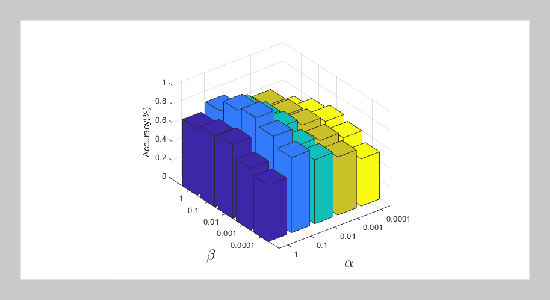- [1] R. J. Stone, A. Cox, M. Gavin, and J. Carpini. Human resource management. 2024.
- [2] P. Li, J. Gao, J. Zhang, S. Jin, and Z. Chen, (2022) “Deep Reinforcement Clustering" IEEE Transactions on Multimedia: DOI: 10.1109/TMM.2022.3233249.
- [3] S. Yuan, B. Kroon, and A. Kramer, (2024) “Building prediction models with grouped data: A case study on the prediction of turnover intention" Human Resource Management Journal 34(1): 20–38.
- [4] J. Gao, M. Liu, P. Li, J. Zhang, and Z. Chen, (2023) “Deep Multiview Adaptive Clustering With Semantic In variance" IEEE Transactions on Neural Networks and Learning Systems: DOI: 10.1109/TNNLS.2023.3265699.
- [5] P. Li, Z. Chen, L. T. Yang, J. Gao, Q. Zhang, and M. J. Deen, (2018) “An incremental deep convolutional compu tation model for feature learning on industrial big data" IEEE Transactions on Industrial Informatics 15(3): 1341–1349. DOI: 10.1109/TII.2018.2871084.
- [6] C. S. Lim, E. F. Malik, K. W. Khaw, A. Alnoor, X. Chew, Z. L. Chong, and M. Al Akasheh, (2024) “Hy brid GA–DeepAutoencoder–KNN Model for Employee Turnover Prediction" Statistics, Optimization & Infor mation Computing 12(1): 75–90. DOI: 10.19139/soic-2310-5070-1799.
- [7] J. Park, Y. Feng, and S.-P. Jeong, (2024) “Developing an advanced prediction model for new employee turnover intention utilizing machine learning techniques" Scien tific Reports 14(1): 1221. DOI: 10.1038/s41598-02350593-4.
- [8] J. Park, Y. Feng, and S.-P. Jeong, (2024) “Developing an advanced prediction model for new employee turnover intention utilizing machine learning techniques" Scien tific Reports 14(1): 1221. DOI: 10.1038/s41598-023-50593-4.
- [9] Q.Zhu,J.Shang, X. Cai, L. Jiang, F. Liu, and B. Qiang. “CoxRF: Employee turnover prediction based on sur vival analysis”. In: IEEE SmartWorld, Ubiquitous Intel ligence & Computing, Advanced & Trusted Computing, Scalable Computing & Communications, Cloud & Big Data Computing, Internet of People and Smart City Inno vation. 2019, 1123–1130.
- [10] Z.Jin, J. Shang, Q. Zhu, C. Ling, W. Xie, and B. Qiang. “RFRSF: Employee turnover prediction based on ran domforests and survival analysis”. In: Web Informa tion Systems Engineering–WISE 2020: 21st International Conference, Amsterdam, The Netherlands, October 20–24, 2020, Proceedings, Part II 21. 2020, 503–515.
- [11] S. Abdelsalam, P. A. Agius, R. Sacks-Davis, A. Rox burgh, M. Livingston, L. Maher, M. Hickman, and P. Dietze, (2024) “Characteristics of attrition within the SuperMIX cohort of people who inject drugs: A multiple event discrete-time survival analysis": DOI: 10.21203/rs.3.rs-3922479/v1.
- [12] I. G. Kang, B. Croft, and B. A. Bichelmeyer, (2021) “Predictors of turnover intention in US federal govern ment workforce: Machine learning evidence that perceived comprehensive HR practices predict turnover intention" Public Personnel Management 50(4): 538–558. DOI: 10.1177/0091026020977562.
- [13] V. Nagadevara and V. Srinivasan, (2008) “Early pre diction of employee attrition in software companies application of data mining techniques" Research and Practice in Human Resource Management 16: 2020 2032.
- [14] N. El-Rayes, M. Fang, M. Smith, and S. M. Taylor, (2020) “Predicting employee attrition using tree-based models" International Journal of Organizational Analysis 28(6): 1273–1291. DOI: 10.1108/IJOA-10-2019-1903.
- [15] F. Alsubaie and M. Aldoukhi, (2024) “Using machine learning algorithms with improved accuracy to analyze and predict employee attrition" Decision Science Let ters 13(1): 1–18. DOI: 10.5267/j.dsl.2023.12.006.
- [16] X. Cai, J. Shang, Z. Jin, F. Liu, B. Qiang, W. Xie, and L. Zhao,(2020)“DBGE:employeeturnoverpredictionbased on dynamic bipartite graph embedding" IEEE Access 8: 10390–10402. DOI: 10.1109/ACCESS.2020.2965544.
- [17] J. Park, S. Kwon, and S.-P. Jeong, (2023) “A study on improving turnover intention forecasting by solving imbalanced data problems: focusing on SMOTE and gen erative adversarial networks" Journal of Big Data 10(1): 36.
- [18] Y. Liu, L. Zhang, L. Nie, Y. Yan, and D. Rosenblum. “Fortune teller: predicting your career path”. In: Pro ceedings of the AAAI conference on artificial intelligence. 30. 1. 2016.
- [19] F. Guerranti and G. M. Dimitri, (2022) “A comparison of machine learning approaches for predicting employee attrition" Applied Sciences 13(1): 267. DOI: 10.3390/app13010267.
- [20] J. Gao, M. Liu, P. Li, A. A. Laghari, A. R. Javed, N. Victor, and T. R. Gadekallu, (2023) “Deep Incomplete Multi-View Clustering Via Information Bottleneck for Pattern Mining of Data in Extreme-Environment IoT" IEEE Internet of Things Journal: DOI: 10.1109/JIOT.2023.3325272.
- [21] B.Perozzi, R. Al-Rfou, and S. Skiena. “Deepwalk: On line learning of social representations”. In: Proceed ings of the 20th ACM SIGKDD international conference on Knowledge discovery and data mining. 2014, 701–710. DOI: 10.1145/2623330.2623732.
- [22] Y. Chang, E. Tanin, X. Cao, and J. Qi. “Spatial Structure-Aware Road Network Embedding via Graph Contrastive Learning.” In: EDBT. 2023, 144-156
















